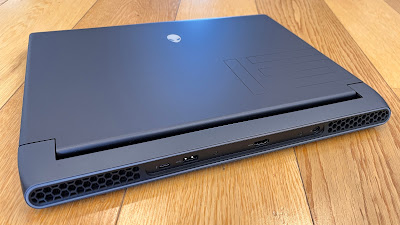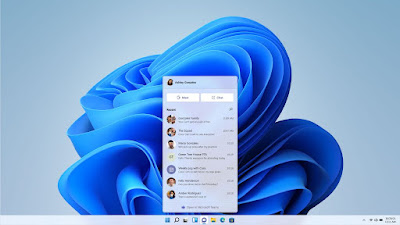I'm pretty new to Apple Watch, I only really tried out my first one a couple of months back but I was immediately impressed with just about everything about it.
When it comes to build quality, ease of use and the colossal number of specifically designed apps available, Apple Watch comes out on top.
All the more impressive given Apple was kind of late to the game in this bit of the market - hard to believe they've only been doing watches since 2015.
Well, there's no sign of them slowing down and given how smitten I've been with the 6th generation device, I was pretty excited to get this year's version on my wrist...
A lot of the hype around the 7th generation Apple Watch has focused on its display, with some justification given it boasts almost 20% more screen area than its predecessor, even though the watch itself is hardly bigger at all. This is thanks to two things; the new display has significantly smaller surrounds and now actually curves into the edges like many high-end smart phone screens have done over the years.
More screen real estate obviously makes the display easier to read and use - illustrated clearly by the fact many native Apple apps have redesigned their button layouts and you can now access a full QWERTY keyboard when creating or replying to messages. Other smartwatches have offered a keyboard option for years and I've always been surprised by how well they work, given how tiny they are. With my first Apple Watch I found it a bit weird Apple didn't have a keyboard - especially given the square form factor. Instead you were restricted to scribbling one letter at a time (very cumbersome) or dictating to Siri (not always accurate given our crazy Kiwi accents). The new keyboard responds to both taps or QuickPath swipes and instantly makes the watch even more of a two-way communication device than it already was.
There are also a couple of new watch faces specifically designed to make the most of the new Retina display - Contour, which is an analogue design featuring numbers that bulge into the curved edges - and Modular Duo, a fully customisable digital face that lets you choose multiple complications and shortcuts to be displayed more clearly than ever before.
The screen is brighter too - not that I had any issues with the last one - and it's significantly brighter when you've set the Watch to Always On Display. Personally, I don't understand why people want their watch on when they're not looking at it but apparently some people do.
On top of the more traditional stainless steel cases in Silver, Gold and Graphite, there's a new range of colours that are right up my alley - Midnight, Starlight, Green, Blue and (PRODUCT)Red all in a muted aluminium finish. The Midnight colour is interesting; it seems black at first but closer inspection suggests a more mysterious, inky blue but why anybody would choose a colour other than (PRODUCT)Red is beyond me.
I feel like I've waited my whole life to own a red watch like this so now I can die happy. Nice to know a portion of all (PRODUCT)Red sales goes to help fund Covid relief too.
Of course, WatchOS has been given an overhaul too. The interface was already great but significant tweaks have been made to things like fitness tracking, guided mindfulness exercises, photo display and watch faces. Sleep tracking has become a lot more intuitive, now including your respiratory rate along with other measurements like heart rate and blood oxygen making the insights here more detailed than before.
It's also now easier than ever to control your smart devices from your Watch. I've really appreciated being able to access my favourite lights with just a couple of swipes on my watch - and some faces even let you place shortcuts to those devices right on the home screen. The future is now.
Apple claims the new Watch is its most durable yet. Already rated WR50 to be fully swim-proof, it now carries an IP6X rating against dust - effectively making it beach-proof too. There's been a lot of hype around this Watch being tough enough to take mountain biking. (Apparently mountain bikers spend most of their time falling off into the dirt. Sounds fun.) As part of this pitch, Apple has now customised its fall-detection feature to react differently to different activities - after all, you don't want the emergency services called every time you successfully block a spike playing volleyball.
And that larger, curvier crystal is supposed to be a lot more crack-resistant too - 50% thicker at its tallest point than the crystal on the previous model.
However...
You can still scratch it.
Within moments of firing this (PRODUCT)Red thing of beauty up, I knew this was the greatest watch I'd ever worn. It looks incredible - especially teamed up with one of the latest Braided Solo Loops or Sports Loops, to match the best colour in the world.
All the features (so many features) work better than ever, WatchOS has been refined in all the right ways, the larger display is more usable and there's even a fast charger included in the box to keep you topped up, making things like sleep tracking more practical.
I was in smartwatch heaven.
Then the very next day, I scratched it.
Noooooooooooooooooooooooooooooooo!
I don't even know how. I have no memory of bashing the Watch against anything. I didn't even fall off my mountain bike! I just looked down at the screen and noticed a big, ugly scratch stretching from the top left corner right into the centre of the display. I was heartbroken. How could this happen? Hang on... is it just a mark? Just dirt? Something sticky? Wipe, wipe, wipe... Nope. Damn. It's a scratch. Perhaps I should have just left it in the box? Taking it out for viewings on special occasions like a precious work of art?
No.
This device is just too useful not to be used - everywhere and all the time. Over the last couple of weeks I've had to accept scratches happen. Like wrinkles. They're just part of life. I'll get over it. Probably.
The 6th-generation Apple Watch was the best smartwatch I'd ever used. This year's is now the best smartwatch I've ever used. Does that mean you should rush out and upgrade? Tough call. The bigger display and new choice of colours are probably the deciding factors - and perhaps the new IP6X rating if you're the kind who likes to roll around in the dirt. Either way, there's no question the Apple Watch still leaves all the others in the dust.
Click here for more information and pricing on the Apple Watch Series 7.

















































